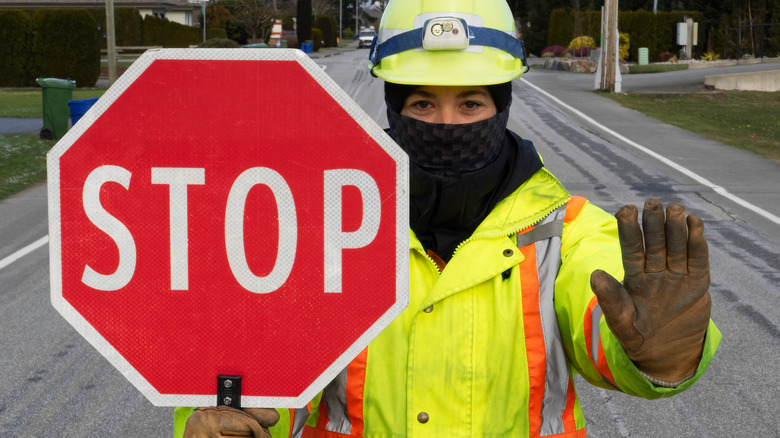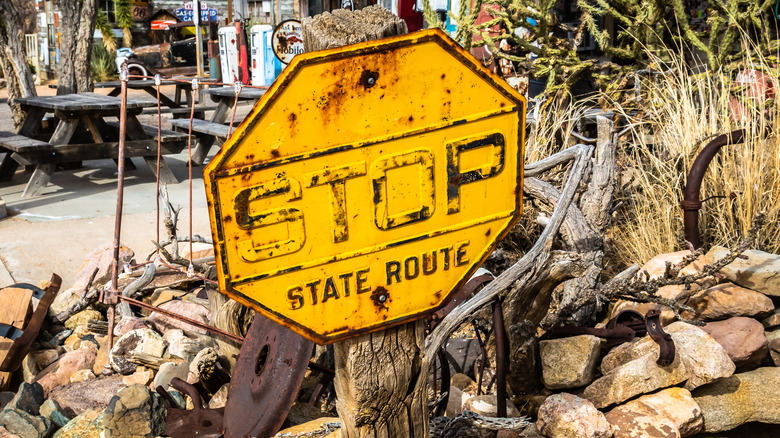Stop Signs Used To Look A Lot Different Than They Do Today
It's hard to envision a world without stop signs. Imagining modern-day life without them conjures up scenes of mayhem. And it's that kind of mayhem (albeit on a smaller scale) that sparked the imagination of William Phelps Eno, who invented the first stop sign. Eno was 9 years old, living in New York City in 1867 when he witnessed several horse-drawn carriages getting clogged at intersections. Eventually, he saw the same kinds of traffic jams after automobiles were invented, per the American Automobile Association (AAA).
It would take a few decades until the adult Eno put his ideas to good use, and in 1900, he proposed the idea of a stop sign. In 1915, the first stop sign was placed roadside in Detroit, Michigan. Eno was responsible for more than just the stop sign — he also came up with the idea of traffic codes and roundabouts. All of these traffic-related tools are still used in many countries across the world, according to the Institute of Transportation Engineers (ITE).
Stop signs were yellow with black letters for years
As is the case with most new inventions, there was no universal shape or color for the first stop signs. This lack of standardization resulted in a variety of stop signs not only from town to town, but state to state. Unsurprisingly, the lack of uniformity led to quite a bit of confusion for travelers. Eventually, in 1922, the American Association of State Highway Officials (AASHO) established a standard shape — the octagon — for stop signs. Insider reports that the organization chose this shape because they wanted motorists on either side of the sign to know what kind of sign they were approaching.
As far as color, these octagonal stop signs were originally yellow with black letters. According to the AASHO, yellow had high visibility, and the color was already associated with other caution signage. The color red was not chosen because it was difficult to see at night, per the Federal Highway Administration (FHA). Moreover, the red dye used during this time faded quickly in the sun (via Insider).
Stop signs evolved with manufacturing advancements
In 1932, the AASHO and First National Conference on Street and Highway Safety (NCSHS) formed the Joint Committee on Uniform Traffic Control Devices to help establish a single manual that contained all information regarding traffic control devices, including stop signs. The first Manual on Uniform Traffic Control Devices (MUTCD) was created in 1935, and it addressed signs, markings, signals, and islands (via FHA).
Signs remained yellow until manufacturers were able to develop fade-resistant pigments in 1954. That same year, the government revised stop sign standardizations, changing the color from yellow to red and making the letters white instead of black. They also changed Interstate signs to be green with white letters. Both implementations have remained pretty much the same ever since, per AAA. Subsequent changes to the manual included protocols for a variety of issues, including work zones, commercial traffic, traveling at higher speeds, and weather-related situations, according to the FHA.


